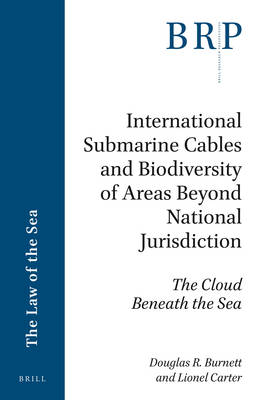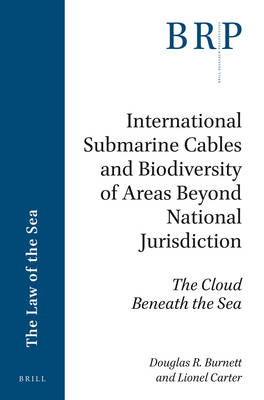
- Afhalen na 1 uur in een winkel met voorraad
- Gratis thuislevering in België vanaf € 30
- Ruim aanbod met 7 miljoen producten
- Afhalen na 1 uur in een winkel met voorraad
- Gratis thuislevering in België vanaf € 30
- Ruim aanbod met 7 miljoen producten
Zoeken
International Submarine Cables and Biodiversity of Areas Beyond National Jurisdiction
The Cloud Beneath the Sea
Douglas R Burnett, Lionel Carter
€ 128,45
+ 256 punten
Omschrijving
If one uses Facebook, Facetime, Skype, Netflix, or any application of the internet internationally, a submarine cable is involved. Fibre optic cables bind the world together and computer server farms, maintained by major telecom and content companies, allow vast amounts of data to be stored and retrieved from the cloud. Not often appreciated is the fact that these server locations worldwide are connected by submarine fibre optic cables. In this sense, the cloud is beneath the sea. While submarine communication cables have been in steady use since 1850, their preeminent place in the modern world has never been as dominant and personal as now. Recently, calls have mounted in the context of marine biodiversity beyond national jurisdiction (BBNJ) for centralized control of submarine cables and for express or de facto diminishment of the freedoms related to them via the United Nations Convention on Law of the Sea, that have served the world's peoples for so long. In International Submarine Cables and Biodiversity of Areas Beyond National Jurisdiction, Douglas R. Burnett and Lionel Carter examine the time proven importance of the existing international treaties, the largely peer-reviewed science on the environmental interaction of submarine cables with high seas environments, and the current submarine cable issues in the context of the BBNJ debates.
Specificaties
Betrokkenen
- Auteur(s):
- Uitgeverij:
Inhoud
- Aantal bladzijden:
- 80
- Taal:
- Engels
- Reeks:
Eigenschappen
- Productcode (EAN):
- 9789004351592
- Verschijningsdatum:
- 27/07/2017
- Uitvoering:
- Paperback
- Formaat:
- Trade paperback (VS)
- Afmetingen:
- 155 mm x 231 mm
- Gewicht:
- 136 g

Alleen bij Standaard Boekhandel
+ 256 punten op je klantenkaart van Standaard Boekhandel
Beoordelingen
We publiceren alleen reviews die voldoen aan de voorwaarden voor reviews. Bekijk onze voorwaarden voor reviews.











